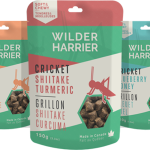 Exotic pet owners use insects (often live or dried crickets and worms) as a protein source for reptiles, birds, fish, frogs, and tortoises. But now, insects have a future in the food of dogs and cats, too.
Exotic pet owners use insects (often live or dried crickets and worms) as a protein source for reptiles, birds, fish, frogs, and tortoises. But now, insects have a future in the food of dogs and cats, too.
Few people know that insects form part of the natural diet of more common pets. In the wild, cats and dogs are known to eat bugs to fulfill their nutritional requirements. For both foragers (dogs) and obligate carnivores (cats), this is a smart survival strategy: insects are an excellent source of protein and can be found in abundant supply even when mammals like rabbits, birds, and mice are scarce.
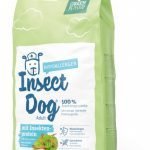 Over the past few years, industry leaders, consumer advocates, and pet owners have coalesced around the need for new ideas and innovations for pet food. Pet food proteins largely come from the same sources as foods made for human consumption — chicken, beef, fish — though the ingredients found in pet formulas are often sourced from scraps, organ meet (offal), or bones. Growing consumer demand for higher-quality, human-grade proteins in pet food has placed additional pressure on a food system that relies on resource-intensive livestock farming. With the United Nations Food and Agriculture Organization (FAO) estimating that global human consumption of meat will rise by more than 100% between 2000 and 2050, the trend towards human-grade chicken or beef protein in pet food seems unsustainable in the long term.
Over the past few years, industry leaders, consumer advocates, and pet owners have coalesced around the need for new ideas and innovations for pet food. Pet food proteins largely come from the same sources as foods made for human consumption — chicken, beef, fish — though the ingredients found in pet formulas are often sourced from scraps, organ meet (offal), or bones. Growing consumer demand for higher-quality, human-grade proteins in pet food has placed additional pressure on a food system that relies on resource-intensive livestock farming. With the United Nations Food and Agriculture Organization (FAO) estimating that global human consumption of meat will rise by more than 100% between 2000 and 2050, the trend towards human-grade chicken or beef protein in pet food seems unsustainable in the long term.
Insect protein is emerging a natural answer to consumer concerns about issues of nutrition and food sustainability, both for h
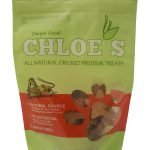
uman and animal consumption. Crickets, for example, require far less space and fewer resources when compared to commercially-reared cattle, pigs, chicken, or fish. They are up to 65% protein by weight, making them more protein-dense than conventional chicken or beef products. And in addition to protein, crickets contain high levels of calcium, iron, vitamin B12, and omega fatty acids.
Cricket flour packs a protein punch, and it offers other advantages over common pet food ingredients such as organ meat and various byproducts of poultry and beef processing. It’s one of a number of low-calorie, low-fat ‘novel’ protein sources that pet food manufacturers are investigating as options for fighting obesity in pets. Cricket flour is also an alternative for dogs that suffer from food sensitivities to animal protein, which can cause gastrointestinal and skin problems. Cricket and other non-allergenic insect proteins have already been tested and put to market — a Dutch company, Trovet, currently manufactures a hypoallergenic dog food using fly larvae.
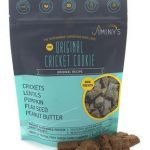 Insects in pet food may have positive implications for human health, too. Crickets and mealworms are far less likely to carry transmissible diseases which have become a major public health concern in the past few decades. Bird flu, swine flu, and mad cow disease are just a few examples of zoonotic diseases transmitted to humans via industrial livestock. Replacing livestock with insects as a major protein source would reduce the risk of transmitting diseases through infected meat (as is the case with mad cow disease) or through human contact with livestock (crickets and other edible insects are unlikely to transmit diseases to humans or other mammals).
Insects in pet food may have positive implications for human health, too. Crickets and mealworms are far less likely to carry transmissible diseases which have become a major public health concern in the past few decades. Bird flu, swine flu, and mad cow disease are just a few examples of zoonotic diseases transmitted to humans via industrial livestock. Replacing livestock with insects as a major protein source would reduce the risk of transmitting diseases through infected meat (as is the case with mad cow disease) or through human contact with livestock (crickets and other edible insects are unlikely to transmit diseases to humans or other mammals).
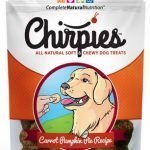
Pet food producers have begun offering insect protein alternatives, mostly in niche markets — but as interest and awareness has grown, so have the options for an expanding customer base. Dutch manufacturer Jonker Petfood unveiled a dog food formula with insects as the only animal source of protein at the 2014 Interzoo pet food industry exhibition. Cricket flour is also used in dog treats, such as Chloe’s Treats (US)
Wilder & Harrier is another pet food manufacturer (from Canada) specializing in sustainable and nutritious products using cricket protein.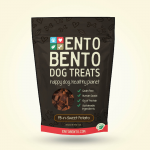 In some cases, the innovation comes from the food producer of bug-based products, as in the case of Jimini’s with “Original” and Entomo Farm with “Chirpies“. Or from start-ups crowdfunding to launch the product, as in the case of EntoBento.
In some cases, the innovation comes from the food producer of bug-based products, as in the case of Jimini’s with “Original” and Entomo Farm with “Chirpies“. Or from start-ups crowdfunding to launch the product, as in the case of EntoBento.
References: Insects: The Pet Food Protein of the Future?

